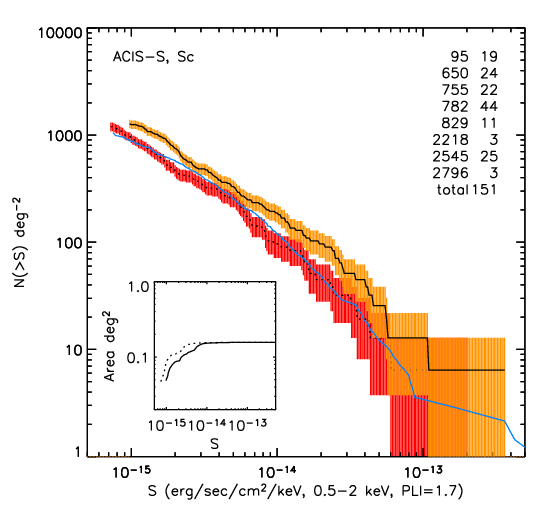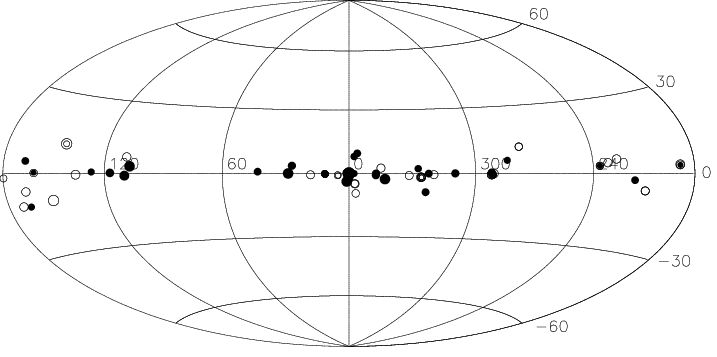

The Chandra Multiwavelength Plane (ChaMPlane) Survey is an ongoing extensive survey of the galactic plane (b < 12o) to probe the nature and distribution of the point source population in the Galaxy. Initiated by our CfA team (J. Grindlay, J. Hong, X. Koenig, S. Laycock, E. Schlegel, M. van den Berg and P. Zhao), its primary goal is to constrain the accretion-powered source distribution for low luminosity (Lx ² 10^33 erg/s) compact objects Ð accreting white dwarfs (CVs), neutron stars and black holes. Although the luminous persistent low mass X-ray binaries (LMXBs) and high mass X-ray binaries (HMXBs) have been catalogued since the UHURU and HEAO-1 surveys (apart from new transients), the vast underlying population of the most abundant compact accretion sources, the CVs, remains poorly known with local space density of ~10-5 pc-3 but still uncertain by nearly an order of magnitude and with a galactic spatial distribution even less well constrained. Similarly, the underlying population of quiescent LMXBs (from which "soft" X-ray transients arise) and HMXBs (likely to be primarily accreting Be systems with excretion disk outbursts which feed their compact companions) are even more uncertain. Yet these objects are signposts for stellar and binary evolution and provide tracers for old (bulge) and young (massive star) populations in the Galaxy and thus the more luminous accretion-powered X-ray sources detectable in even local group galaxies and beyond.
ChaMPlane was proposed to utilize the superb Chandra spatial resolution and sub-arcsec source positions to enable source identifications. A "typical" CV with Lx ~1031 erg/s and Mv ~7 would finally be detectable at "typical" galactic distances: at 6kpc, a 50ksec exposure would yield 10 cts and V ~23 counterpart for a low extinction field with Av ~2. Even with this exquisite sensitivity, ChaMPlane harvests mostly stars (>104 times more common than CVs), detected mostly by their coronal emission (for, typically, G or later). Early type stars and emission from colliding winds are less likely to appear in the survey fields since these are chosen to be a) relatively free of bright diffuse emission (which would limit sensitivity) and bright stars (e.g. young clusters), which would contaminate our deep followup optical ChaMPlane survey and b) local minima (if possible) in their absorbing column, NH, to optimize optical identifications and spectra. ChaMPlane fields are chosen from archived (or scheduled) observations and are c) ideally deep (>30-50ksec) exposures to enhance sensitivity. From this mining of the serendipitous Chandra galactic plane database, 141 fields from cycles 1-6 have been selected (see Figure 20) of which ~120 have been now been processed in a customized pipeline processing system to yield some 104 sources. Accretion sources are identified initially as Ha emission objects in our parallel NOAO ChaMPlane survey with the Mosaic CCD on the CTIO and KPNO 4m telescopes: 59 fields (36arcmin) covering the 141 Chandra ACIS fields.

Figure 20: Galactic distribution of ChaMPlane fields. Filled symbols are ACIS-I, open symbols are ACIS-S, and symbol size is proportional to exposure time. Some 45 fields are contained within the symbol at the Galactic center (Grindlay et al. 2005).
Initial Papers: Galactic Anti-Center Source Distributions and First Bulge IDsA suite of ChaMPlane papers have been submitted by the following lead authors: an overview of the Survey and science goals, data products and example results (Grindlay); X-ray pipeline processing methods and spatial-spectral distributions of Anti-Center sources (Hong); a full description of the optical followup photometry (Zhao); and deep IR photometry of the SgrA* cusp source distribution (Laycock).
The galactic anti-center (90o < l < 270o) is a natural place to start, with generally lower NH and stellar crowding. Preliminary logN-logS distributions for sources detected in 8 ACIS-S fields in soft (0.5-2 keV) vs. hard (2-8 keV) bands is shown in Figure 21. Soft sources appear to have a flatter distribution (as expected for disk sources) than the background AGN distribution for the Schlegel reddening model, whereas hard sources are consistent with the high latitude background at S ³ 10-13 cgs. The bulk of the soft sources are coronal stars in the disk, and the hard sources are likely accretion-powered, with AGN clearly dominant at faint fluxes. Indeed, the optical followup photometry (Zhao et al 2005) as well as WIYN-Hydra spectroscopy (Rogel et al 2005) yields no Ha emission objects in the (typical) ²1" Chandra error circles (99% confidence) apart from a number of dMe counterparts. Several CVs have been found, however, in the 36'x36' full Mosaic optical fields for these anti-center sources, which are 5 to 20 times larger than the embedded ACIS-I and S fields, respectively.
 |  |
Figure 21: log N - log S source counts (from Hong et al. 2005) for 8 ACIS-S anti-center fields for two de-reddening models: Schlege et al (1998) (yellow; full plane NH) vs. Drimmel et al. (2001) (red; distance-dependent NH) vs. AGN background counts (blue) from the ChaMP survey (Kim et al. 2004). Results from ACIS-I observations of 7 additional fields also show that AGN dominate the hard source distribution for fluxes S less than 10^13.5 cgs. Chandra obsIDs and source numbers in each band are given in the key.
The situation changes dramatically towards the galactic Bulge. Here ChaMPlane is extending uniform re-processing to selected ACIS fields within Bulge, including the wide-field survey of Wang et al (2002) and deep SgrA* survey of Muno et al (2003), along with our own targeted program of deep (100ksec) exposures on three low-extinction windows (e.g. Baades Window) within 4o of the galactic center. Analysis is still underway, but Chandra CVs are being found as well as giants (spectroscopically identified) that are hard Chandra sources and probably harbor CV or quiescent LMXB companions (either neutron stars or black holes). Perhaps most dramatic are the deep IR photometry results on the SgrA* cusp source distribution, as reported by Laycock et al (2005), which appears to rule out a HMXB origin for this galactocentric population of low luminosity hard Chandra sources.
Full access to the ChaMPlane catalogs and processing archives, both Chandra and optical, is being released as publications are submitted, and will be posted soon after March 15 for the anti-center fields. Information and tools are available from the ChaMPlane website, http://hea-www.harvard.edu/ChaMPlane/.
Josh Grindlay